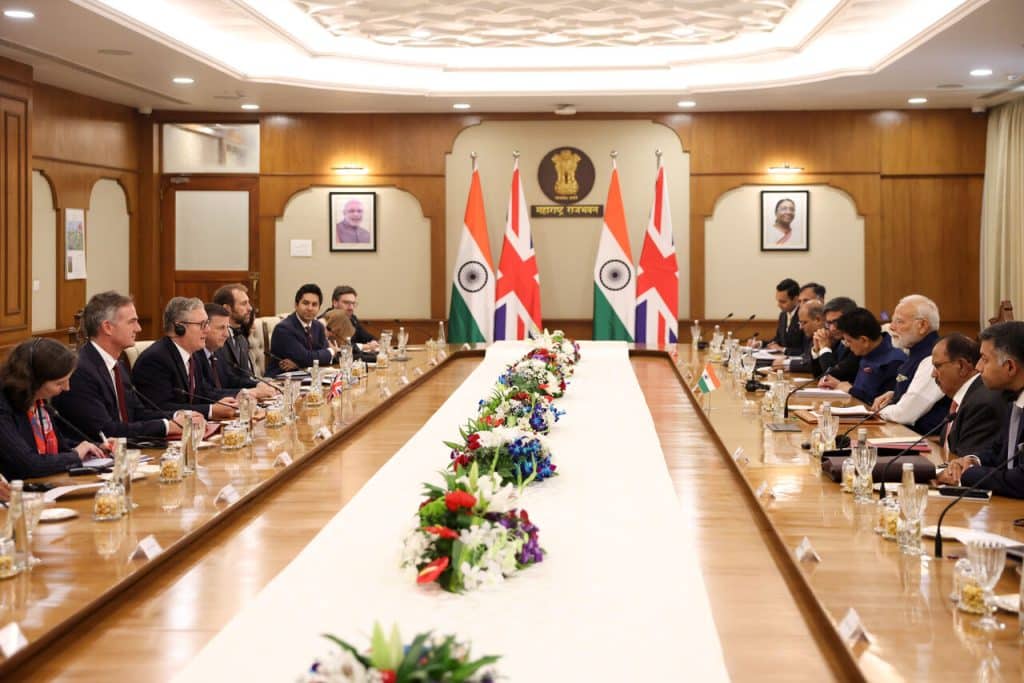Starmer’s trip to India: Diplomatic show or attempt to redefine London’s role in Asia?
Keir Starmer, on his first official visit to India since the Labor government took office, signed a series of economic, technological, and defense agreements with New Delhi, which at first glance are seen as a sign of the revival of special relations between the two countries. But as the British media and think tanks have reported, the trip is more than an economic mission, carrying a clear geopolitical message to East Asia and London’s Western allies; a message based on reducing dependence on China and finding an Asian partner that can be a new fulcrum for Britain’s strategic interests.
The British government has announced that 64 Indian companies will invest more than £1 billion in various British industries as part of the agreements signed in New Delhi; investments that, according to Downing Street, will create nearly 7,000 new jobs in the country. The agreements follow the signing of the UK-India Comprehensive Economic and Trade Agreement (CETA) last July, and the Starmer government has promised to speed up its ratification and implementation to increase bilateral trade to more than £25 billion by 2040.
Speaking at a joint summit of UK-India CEOs in Mumbai, Starmer described India as “a key partner for the UK’s economic future” and said: “We are looking for a partnership that simultaneously fosters growth, innovation and mutual trust.” But analysts in London have dismissed his remarks as “show diplomacy,” noting that many of the British executives on the delegation are looking beyond developing Indian markets and are seeking to influence the government’s economic direction at home.
Technological cooperation in the shadow of competition with China
The joint statement of the two countries highlighted three main areas of technological cooperation, including the establishment of an “India-UK Connectivity and Innovation Center” to develop sixth-generation communication technology (6G) and extraterrestrial space networks, the launch of a “joint center for artificial intelligence,” and the formation of a “Critical Minerals Processing Cooperation Forum.”
The Financial Times described these initiatives as part of the British government’s policy to diversify supply chains and reduce dependence on China, writing that London is seeking to find a “reliable partner in Asia” that has both the necessary technological capacity and political stability.
Reuters also added in an analytical report: “Cooperation in the field of critical minerals and the development of next-generation communications is part of Britain’s effort to find a practical alternative to Chinese supply chains; an effort that has been supported by Washington and welcomed by New Delhi.”
In the defense sector, the two countries agreed to expand cooperation between the armed forces and continue joint naval and air exercises. The joint statement announced an agreement to establish a “regional maritime security center of excellence” within the framework of the Indo-Pacific Ocean Initiative (IPOI) and also mentioned cooperation in the development of electric propulsion systems for Indian ships.
In the area of arms, London and New Delhi have reached a government-to-government agreement for the supply of “Light Multi-Missile Missiles” (LMMs) to India, a deal reportedly worth around £350 million. Military observers have seen the deal as a sign of Britain’s gradual return to the Asian arms market, which for the past two decades has been dominated by China, France, and the US.

